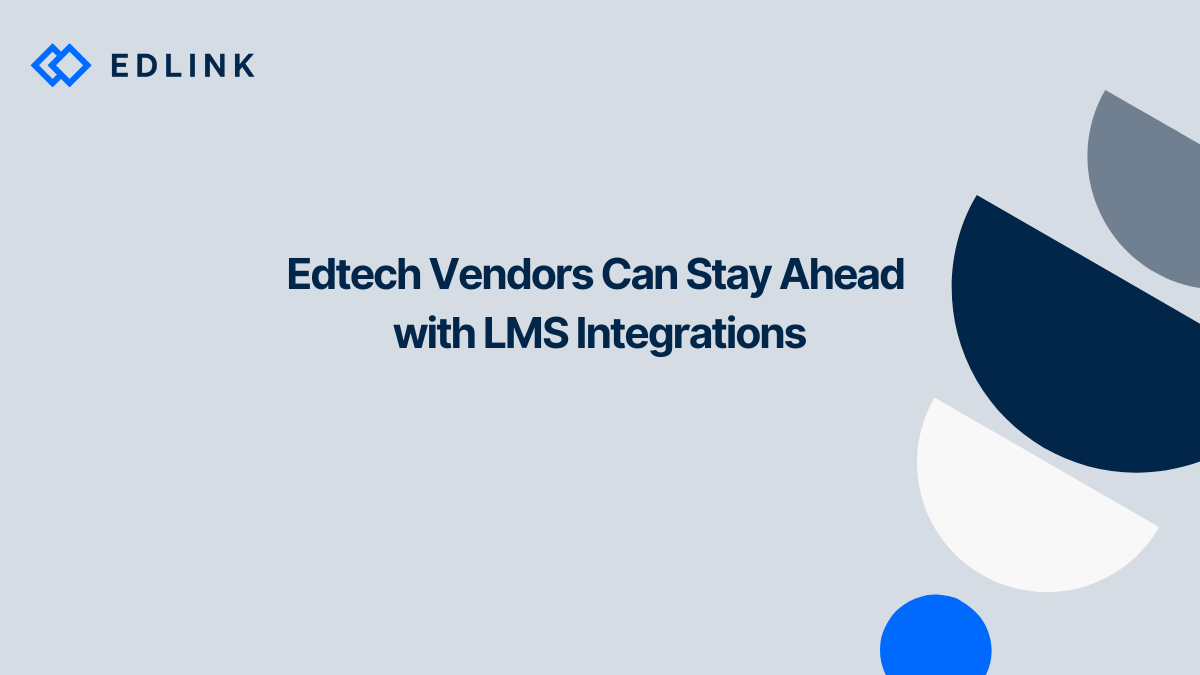Since 2020, learning institutions have demanded more interoperability from the tools they use. In response, edtech vendors have adapted, adding other features to stay competitive.
This is where LMS integrations come into play.
LMS integrations help vendors support schools by eliminating password management and reducing repetitive, manual tasks. This gives students and educators easier access to their tools and saves time through automated workflows. Vendors with LMS integrations are more attractive to schools that need flexible, interoperable solutions.
What is LMS Integration
A Learning Management System (LMS) is software that schools use to manage digital learning. It organizes courses, assignments, grades, and communication in one central place. LMS integration means connecting your edtech product with a school’s LMS so that data can flow between the two systems. This connection allows your product to automate key workflows, reduce friction for users, and simplify access for students and teachers.
Common integration features include:
- Single sign-on (SSO): Users log in with their LMS credentials; no new accounts or passwords.
- Rostering: Student and course data syncs automatically, so no one has to upload CSVs.
- Grade sync: Grades entered in your product flow back into the teacher’s LMS gradebook.
- Content sync: Teachers can assign content from your tool directly within the LMS.
Together, these integrations eliminate manual work and repetitive tasks—making your product easier to adopt, more likely to be used consistently, and better positioned for long-term success in schools.
How LMS Integrations Support Vendor Growth
LMS integrations give edtech developers the tools to build better platforms. They save time, improve user experience for users, and help vendors meet the demand for interoperability, leading to stronger client relationships.
There are 2 ways LMS integrations benefit edtech vendors.
- Save Developer Time by Avoiding Redundant Features
- Meet Clear Client Needs with Seamless Data Sharing
Integrations Can Save Developers Time by Cutting Feature Duplication
LMS integrations let developers tap into built-in platform features schools already use. LMS providers already offer key classroom tools that teachers rely on. Duplicating those features in your product adds unnecessary work for developers and friction for users.
For example, instead of building a separate gradebook, developers can sync grades directly into Canvas or another LMS. Teachers no longer need to copy and paste grades for every student and class, saving hours of manual work.
Single sign-on (SSO) also streamlines account management. SSO permits educators and students to sign into a third-party tool using their existing LMS credentials – managed by a learning institution’s IT administrator. There’s no need to build tools for IT admins to manage accounts or reset passwords. The LMS handles it all. By integrating that functionality, issues around accounts can be managed by the LMS admin, rather than the product’s support team.
Integrations Solve a Clear Client Need
LMS integrations allow third-party products to act on behalf of an authenticated user. That means users can log in once and send data—like assignments or grades—back to the LMS without extra steps.
For example, a teacher using a Schoology-integrated app can assign a quiz, students take it in the app, and results sync back to the Schoology gradebook—all without downloading or any manual entry work.
This kind of integration saves teachers time—no need to copy grades or manage student logins. Students access the app with their LMS credentials, and teachers assign content with a click.
Well-built LMS integrations save teachers time, simplify access for students, and create smoother school-vendor relationships.
*Last updated: 9.26.25
Read More on Data Integration
Here are other articles we’ve written on integrations to help you on your journey:
- What to Know About Single Sign-On for Education
- The Challenges of Using APIs for LMS Integration in k12 and Higher Education
- What’s the Difference Between API and LTI Integration?
- Introducing Edlink
- Our Mission at Edlink
- What is the Edlink Unified API?
Want to Get Started?
If you're looking for a partner to guide you through developing integrations, then let us introduce ourselves. We're Edlink!

